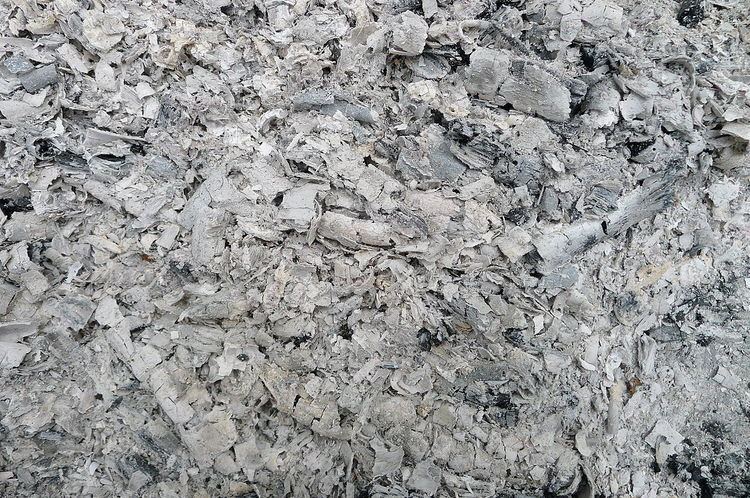 | ||
Ash or ashes are the solid remains of fires. Specifically, it refers to all non-aqueous, non-gaseous residues that remain after something is burned. In analytical chemistry, in order to analyse the mineral and metal content of chemical samples, ash is the non-gaseous, non-liquid residue after a complete combustion.
Ashes as the end product of incomplete combustion will be mostly mineral, but usually still contain an amount of combustible organic or other oxidizable residues. The best-known type of ash is wood ash, as a product of wood combustion in campfires, fireplaces, etc. The darker the wood ashes, the higher the content of remaining charcoal will be due to incomplete combustion.
Like soap, ash is also a disinfecting agent (alkaline). The World Health Organization recommended ash or sand as alternative to soap when soap is not available.
